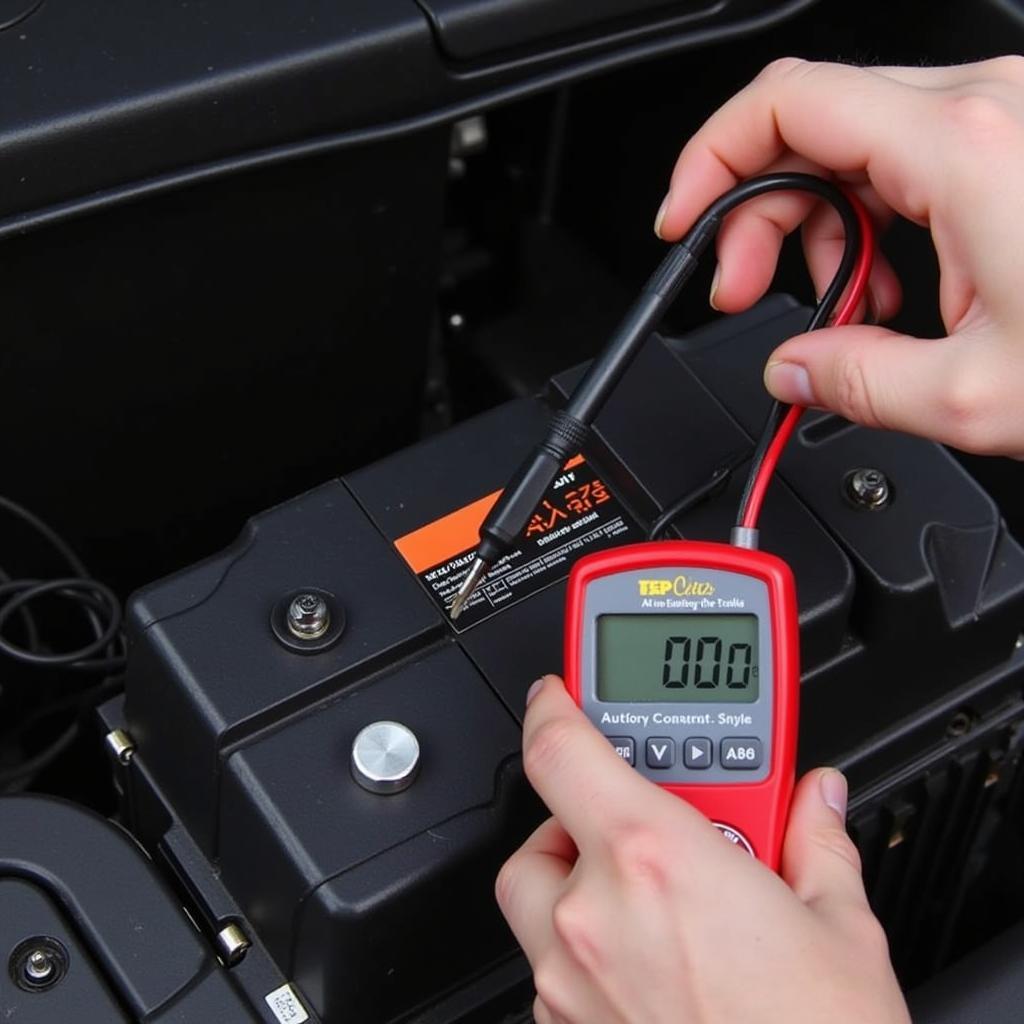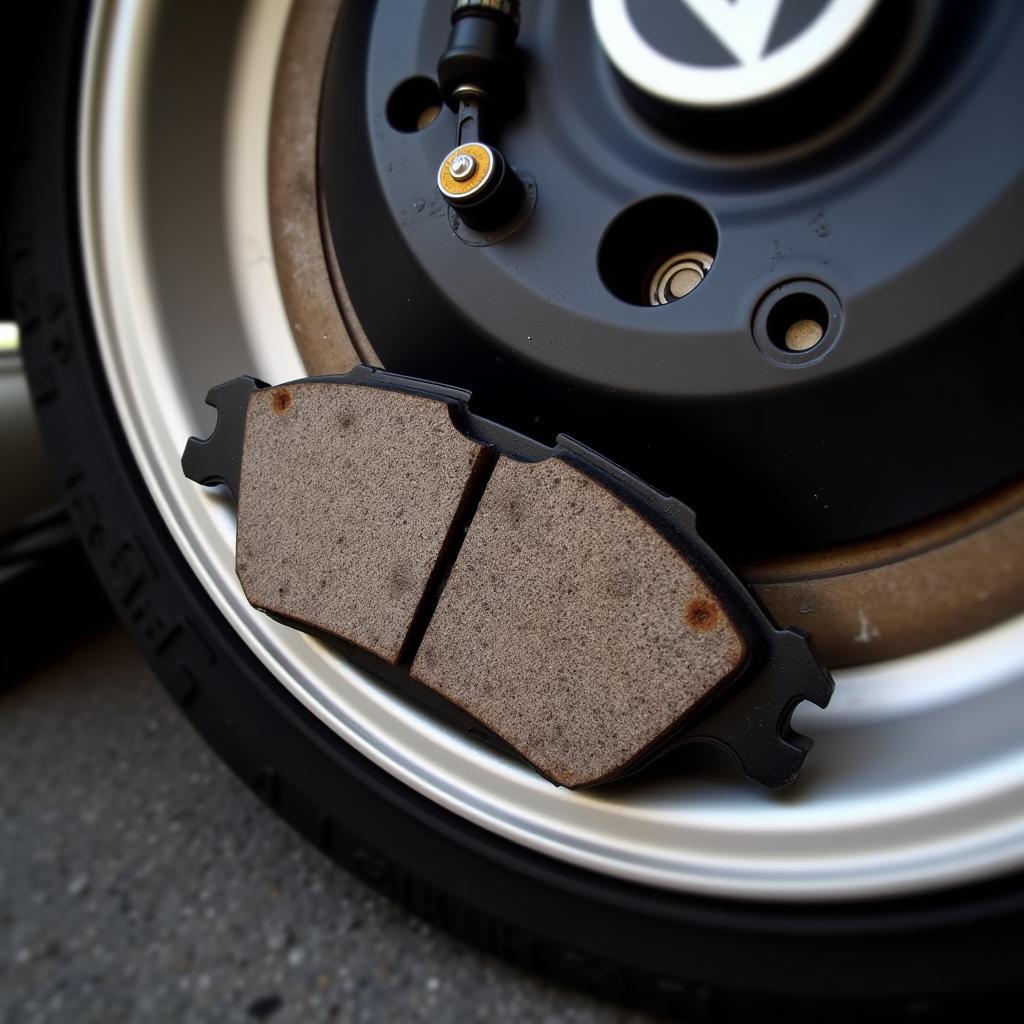The Jeep Compass auxiliary battery, also known as the secondary battery, plays a crucial role in powering various electrical systems, including the start-stop system, radio, and other accessories. Experiencing Jeep Compass auxiliary battery problems can be frustrating, leading to unexpected malfunctions and inconveniences. This comprehensive guide explores common issues, diagnostic procedures, and effective solutions for resolving these problems, empowering you to keep your Compass running smoothly.
Understanding Your Jeep Compass Auxiliary Battery
The auxiliary battery is a smaller, supplementary power source distinct from the main starting battery. It’s designed to handle electrical loads when the engine is off or during the start-stop cycle, ensuring a seamless transition and preventing strain on the primary battery. Common signs of a failing auxiliary battery include start-stop system malfunctions, difficulty starting the vehicle, flickering interior lights, and warning messages on the dashboard.
Common Symptoms of a Failing Auxiliary Battery
A dying auxiliary battery can manifest in several ways. These symptoms can range from minor inconveniences to more significant operational issues, impacting your overall driving experience. Recognizing these symptoms early can help prevent further complications and costly repairs.
- Start-Stop System Malfunction: The most common symptom is the start-stop system failing to operate correctly. The engine may not shut off at idle, or it might struggle to restart automatically.
- Slow Cranking: If the main battery is also weakened, you might notice the engine cranking slower than usual when starting.
- Electrical Glitches: Flickering interior lights, malfunctioning radio, or problems with power windows and locks can all point to a failing auxiliary battery.
- Warning Messages: Your Compass might display warning messages related to the start-stop system or low battery voltage.
Diagnosing Jeep Compass Auxiliary Battery Issues
Before replacing the auxiliary battery, it’s essential to diagnose the problem accurately. This can be done through a series of simple checks and tests to ensure you’re addressing the root cause.
Checking the Battery Voltage
Using a multimeter, you can measure the voltage of the auxiliary battery. A healthy battery should read around 12.6 volts. A significantly lower reading suggests the battery needs replacement.
Inspecting for Corrosion
Corrosion on the battery terminals can impede the flow of electricity. Check for any buildup of white or green residue and clean it with a wire brush and baking soda solution.
Performing a Load Test
A load test assesses the battery’s ability to hold a charge under load. This test can be performed using a specialized battery tester, helping to determine the battery’s overall health.
 Testing Jeep Compass Auxiliary Battery With a Multimeter
Testing Jeep Compass Auxiliary Battery With a Multimeter
Solutions for Jeep Compass Auxiliary Battery Problems
Once you’ve diagnosed the problem, you can implement appropriate solutions. Depending on the severity of the issue, this could involve simple cleaning, battery replacement, or seeking professional assistance.
Replacing the Auxiliary Battery
If the battery is faulty, replacement is the most effective solution. Ensure you purchase the correct battery type and follow the manufacturer’s instructions for installation.
Cleaning Battery Terminals
Regular cleaning of the battery terminals can prevent corrosion and maintain proper electrical connections. Use a wire brush and a baking soda solution to remove any buildup.
Seeking Professional Help
For complex electrical issues or if you’re uncomfortable working on the vehicle’s electrical system, consulting a qualified automotive technician is recommended.
“Regular maintenance, including checking and cleaning your auxiliary battery terminals, can significantly extend its lifespan and prevent unexpected issues,” advises John Smith, Senior Automotive Electrical Technician at AutoTech Solutions. He further emphasizes the importance of using the correct battery type for your specific Jeep Compass model.
Conclusion
Jeep Compass auxiliary battery problems can be easily diagnosed and resolved with the right knowledge and approach. By understanding the common symptoms, diagnostic procedures, and solutions outlined in this guide, you can keep your Compass’s electrical system in optimal condition and enjoy a trouble-free driving experience. Regular maintenance and timely attention to any warning signs will help prevent future issues and ensure the longevity of your auxiliary battery. Don’t let a faulty auxiliary battery disrupt your journey; take proactive steps to keep your Jeep Compass running smoothly.
FAQ
-
How often should I replace my Jeep Compass auxiliary battery? The lifespan of an auxiliary battery can vary depending on usage and environmental conditions, but it’s generally recommended to replace it every 3-5 years.
-
Can I jump-start my Jeep Compass using the auxiliary battery? No, the auxiliary battery is not designed for jump-starting. Use the main battery for jump-starting procedures.
-
What type of battery should I use for my Jeep Compass? Consult your owner’s manual or a qualified automotive technician to ensure you use the correct battery type and specifications.
-
Will a faulty auxiliary battery affect my Jeep Compass’s performance? Yes, a failing auxiliary battery can impact the start-stop system, potentially affecting fuel efficiency and causing other electrical issues.
-
Can I drive my Jeep Compass with a dead auxiliary battery? Yes, you can still drive your Compass with a dead auxiliary battery, but the start-stop system will likely be disabled, and some accessories might not function correctly.
-
How can I prevent Jeep Compass auxiliary battery problems? Regular maintenance, including cleaning the battery terminals and ensuring proper charging, can help prevent problems.
-
Where is the auxiliary battery located in my Jeep Compass? The location of the auxiliary battery can vary depending on the model year. Consult your owner’s manual for the specific location in your vehicle.

